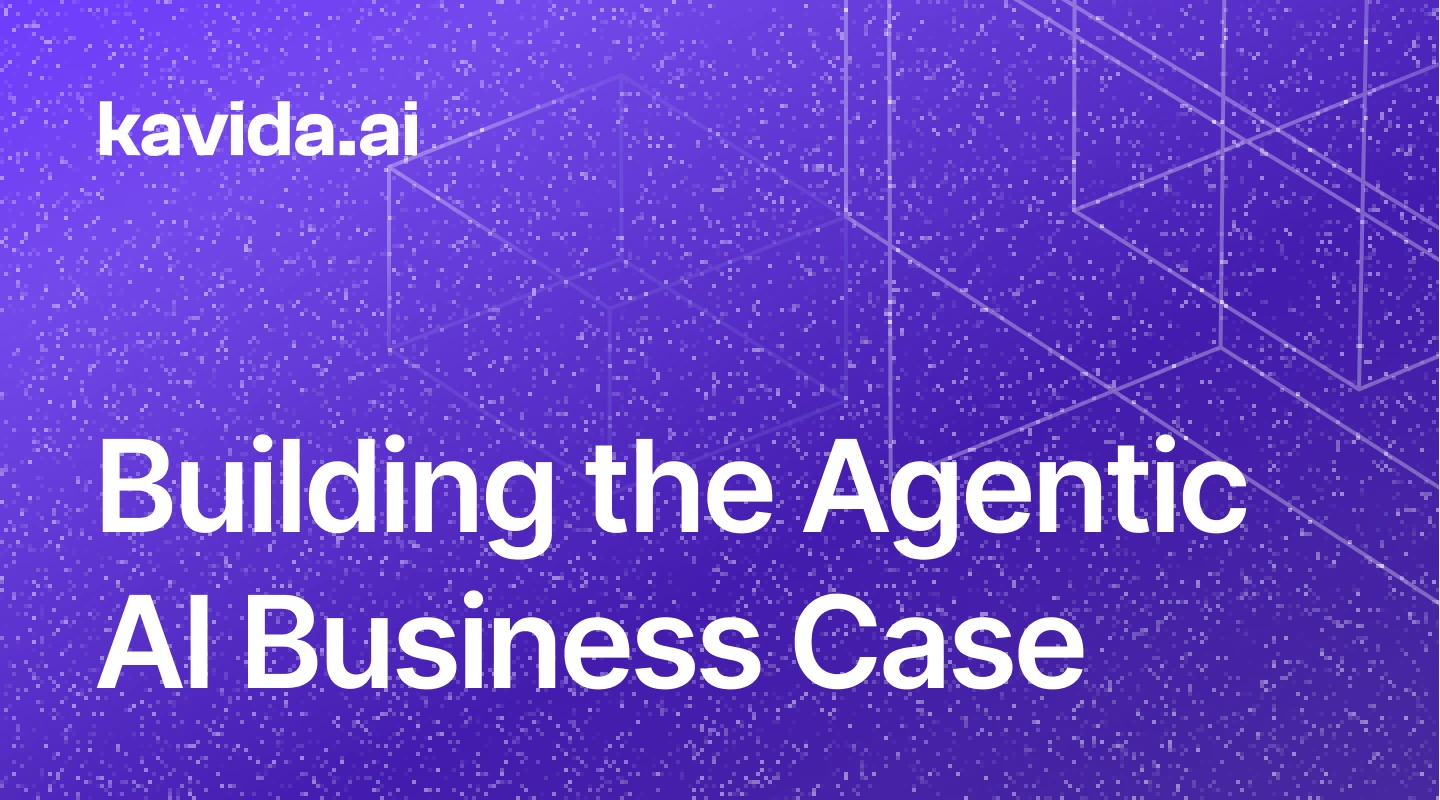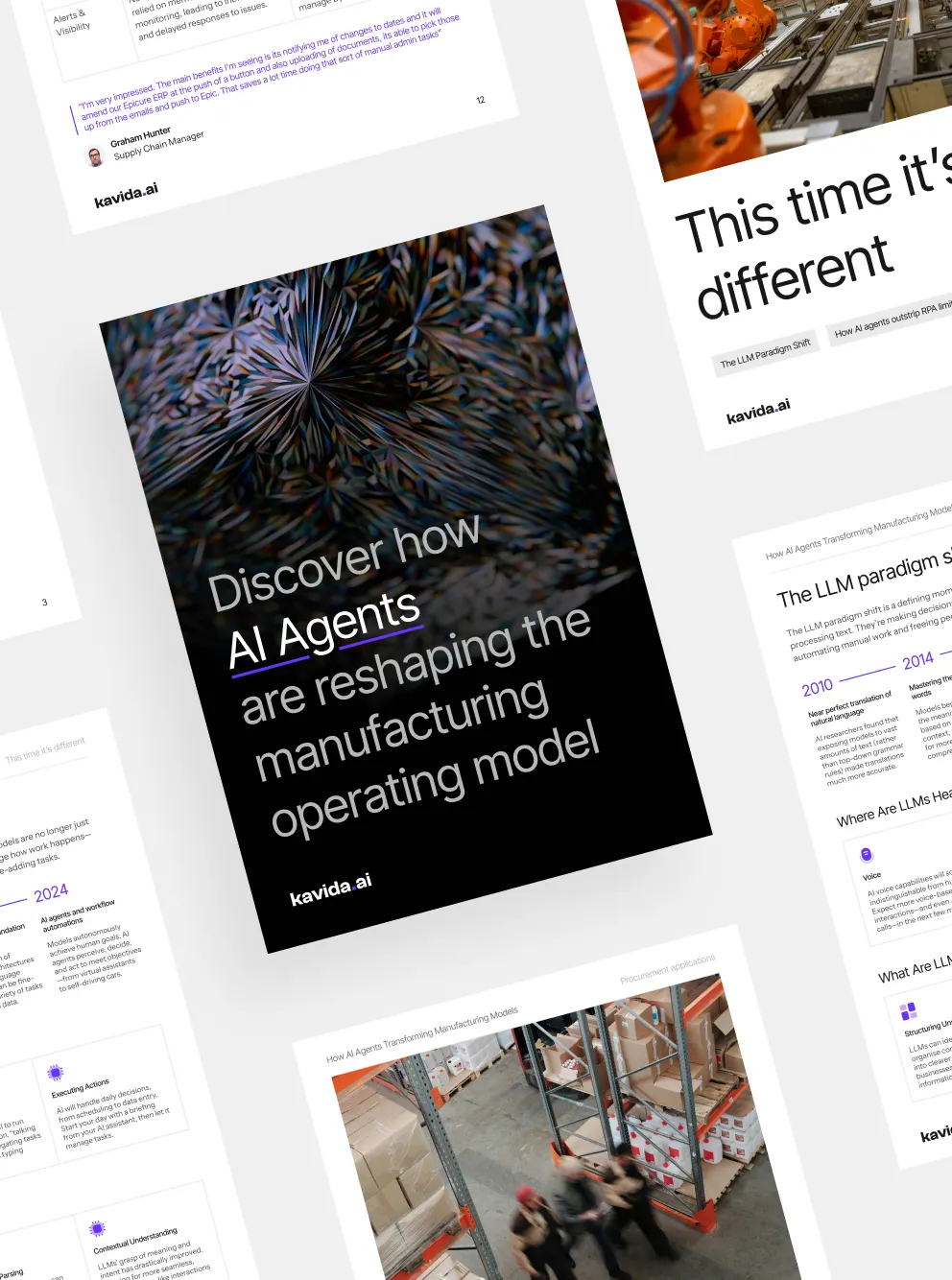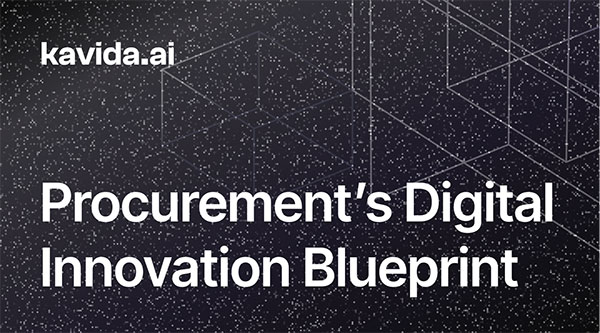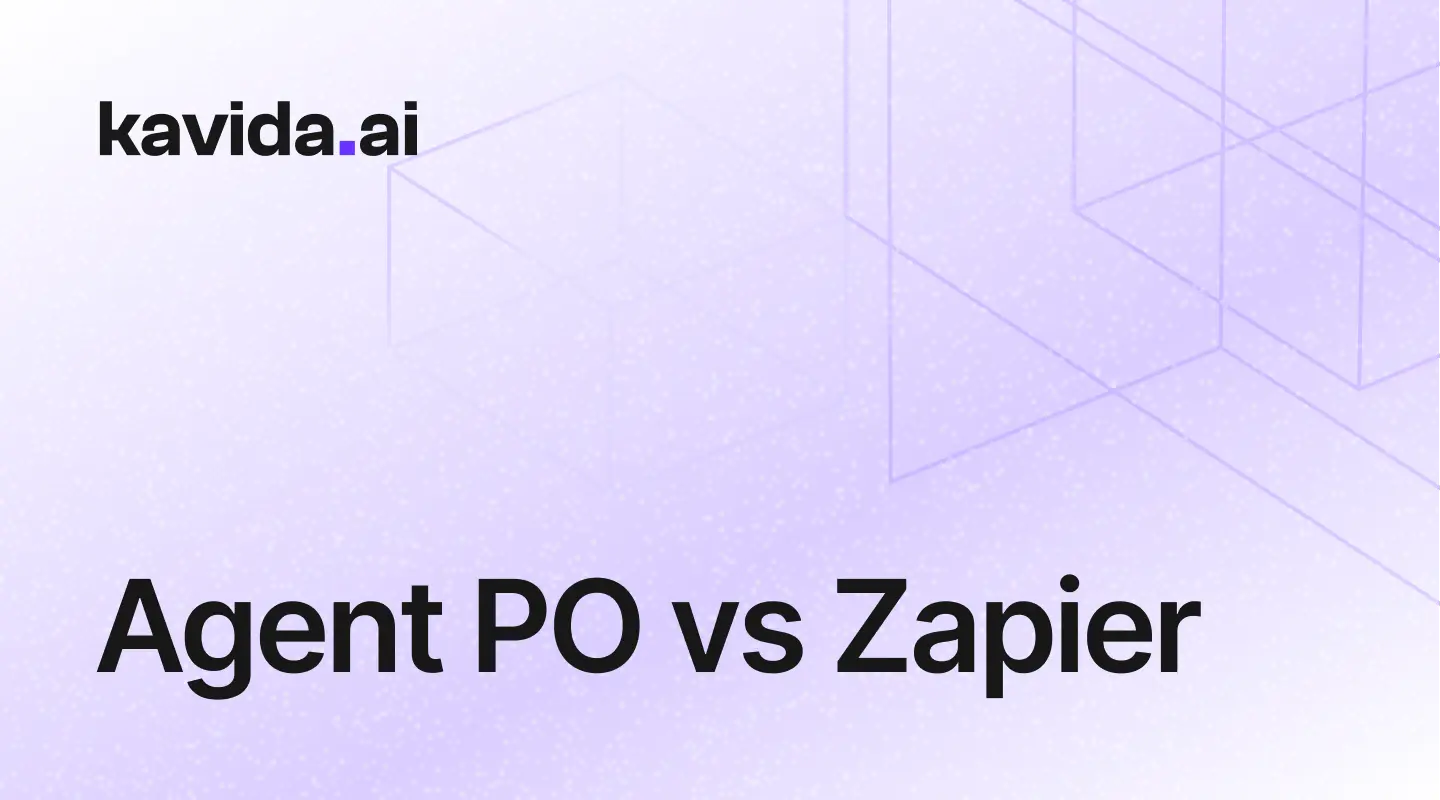

Discover how AI agents are reshaping the manufacturing operating model

Hi, I’m Alison!
Share your details, and I’ll give you a call in minutes to see how we can assist.

The Ultimate Guide to Procuring Generative AI for Your Manufacturing Company
Table of Contents
ToggleEnterprise Resource Planning (ERP) systems have been at the heart of manufacturing, procurement, and supply chain operations for decades. Traditional ERPs have been instrumental in standardizing processes, providing operational visibility, and improving resource efficiency. However, as industries evolve and face increasingly complex challenges, traditional ERPs are showing their limitations. Enter AI-infused ERPs like Agent PO, which take automation and decision intelligence to new heights. Let’s explore the gaps in traditional ERPs and how AI-driven solutions like Agent PO’s automated workflows and decision intelligence use cases effectively solve these challenges.
Limitations of Traditional ERPs
Traditional ERP systems were designed to bring structure and consistency to business processes by centralizing data and standardizing operations. While they have served their purpose effectively, they also come with significant limitations:
1. Manual Processes and Limited Automation
Traditional ERPs still rely heavily on manual interventions. Tasks such as following up on purchase orders, confirming supplier documents, and handling changes in orders often require human involvement. These processes are repetitive, time-consuming, and prone to errors.
2. Reactive Decision-Making
ERP systems are often reactive, meaning they only report problems after they happen. For example, a delay in an order might be visible in the ERP system, but it typically requires the user to manually identify the issue and take corrective action. The lack of proactive alerts and predictive insights limits an organization’s ability to mitigate risks before they become critical.
3. Data Silos and Lack of Integration
Many traditional ERPs struggle with data silos, especially when different functions, such as procurement, inventory, and finance, operate on separate systems. This lack of integration hinders seamless communication and makes it challenging to obtain a holistic view of operations for effective decision-making.
4. Lack of Intelligent Insights
ERP systems can provide data but lack the analytical intelligence to generate actionable insights. Decision-makers are often required to manually analyze reports to extract meaningful information. The absence of AI-driven insights makes it difficult to quickly identify opportunities for cost optimization, risk mitigation, or supplier performance improvement.
How AI-Infused ERPs with Agent PO Fill the Gaps
AI-infused ERPs, such as those enabled by Agent PO, solve these challenges by incorporating artificial intelligence to create automated workflows and deliver decision intelligence. Here’s how Agent PO addresses the limitations of traditional ERPs:
Automated Workflows Use Cases
- Order Confirmation Automation: Agent PO automates the follow-up for order confirmations, eliminating manual tracking. Procurement managers are automatically alerted if an order remains unconfirmed, ensuring no critical communication is missed. This significantly reduces the workload and mitigates the risks of human error.
- Chasing Documents: Traditional ERPs lack the capability to follow up on missing documents. Agent PO automates document follow-ups (e.g., invoices, GRNs), reducing administrative workload and ensuring timely submissions for smooth procurement and financial workflows.
- Shipment and Delivery Tracking: Agent PO provides real-time visibility into shipments, sending proactive alerts for key milestones and delays. Unlike traditional ERPs, which only show delayed delivery data after it’s reported, Agent PO ensures logistics teams can anticipate and resolve issues.
- Purchase Order Delay Alerts: Instead of waiting to find delays manually, Agent PO provides automated alerts when a delay in purchase orders occurs due to supplier issues or external factors like port congestion. This enables proactive action to prevent production disruption.
Decision Intelligence Use Cases
- Supplier Scorecard and Risk Management: Agent PO leverages AI to evaluate suppliers on key metrics such as On-Time In-Full (OTIF) delivery, responsiveness, and risk factors. Real-time alerts notify users of potential risks, enabling proactive supplier management. Traditional ERPs lack such built-in intelligence, limiting procurement managers to retrospective evaluations based on past performance data.
- Spend Visibility and Optimization: With traditional ERPs, spend data is often fragmented across departments, making it challenging to gain a holistic view. Agent PO provides detailed, AI-driven spend reports, analyzing expenses by supplier, material, and country. These insights help Category Managers identify cost-saving opportunities and optimize sourcing strategies.
- Inventory Management and Stock Alerts: Traditional ERPs only show inventory levels and can lead to stockouts if data is not monitored consistently. Agent PO’s AI monitors stock levels in real-time and provides automated alerts when inventory falls below a critical threshold, allowing for timely reordering to avoid disruptions.
- Reducing Sourcing Costs: AI-driven insights from Agent PO help procurement leaders identify inefficiencies, negotiate better terms with suppliers, and minimize sourcing costs. Traditional ERPs provide data, but analyzing it manually to uncover opportunities is labor-intensive and inefficient.
- Forecast Accuracy and Inventory Reduction: Traditional ERPs struggle to provide accurate forecasts, leading to either overstocking or stockouts. Agent PO leverages AI to enhance forecast accuracy, reduce stagnant inventory, and optimize weeks-on-hand (WoH) metrics. This helps finance teams improve cash flow and reduce warehousing costs.
The Business Impact of AI-Infused ERPs with Agent PO
The integration of AI into ERP systems through solutions like Agent PO delivers transformative benefits across procurement, finance, and supply chain management:
- Reduced Manual Workload: Automated workflows free up valuable time for procurement and inventory teams to focus on strategic tasks rather than repetitive manual follow-ups.
- Proactive Risk Management: Real-time alerts for supplier risks, shipment delays, and order issues enable proactive decision-making, reducing disruptions and costs.
- Enhanced Supplier Performance: The supplier scorecard feature allows for continuous monitoring and improvement of supplier relationships, leading to better quality and reliability.
- Optimized Inventory Levels: Automated stock monitoring and order alerts ensure optimal inventory levels, reducing both stockouts and excess inventory, leading to better working capital management.
- Data-Driven Decision Making: AI-driven insights enable finance, procurement, and category managers to make informed decisions quickly, ultimately leading to cost reductions, risk mitigation, and improved profitability.
Conclusion
While traditional ERPs have served as the backbone for operational management for many years, they lack the capabilities required to handle the increasing complexity of modern supply chains. AI-infused ERPs, like those powered by Agent PO, bridge these gaps with automated workflows and decision intelligence that reduce manual tasks, mitigate risks proactively, and provide actionable insights to enhance overall efficiency. By leveraging Agent PO, organizations can transform their ERP systems into powerful enablers of strategic growth, resilience, and agility in an increasingly dynamic business environment.
The Ultimate Guide to Procuring Generative AI for Your Manufacturing Company
Table of Contents
Toggle
Author:

Kevin Musprett
Head of Growth at Kavida.ai
Kevin drives GTM at Kavida, an AI agent used by manufacturing purchasing teams so they never miss a critical order from suppliers. Kevin dedicates himself to building and scaling kavida.ai to become the PO management platform of choice for an addressable market of over 15 million users.
Related articles

A Procurement Champion’s Guide to Building the AI Business Case
Procurement leaders today need more than just efficient workflows—they need insights that drive smart decision-making. For decision makers...

The Procurement Blueprint for Human-Centric Digital Innovation
Procurement leaders today need more than just efficient workflows—they need insights that drive smart decision-making. For decision makers...

Why Procurement Needs More Than Automation: Choosing Agent PO Over Zapier
Procurement leaders today need more than just efficient workflows—they need insights that drive smart decision-making. For decision makers...
